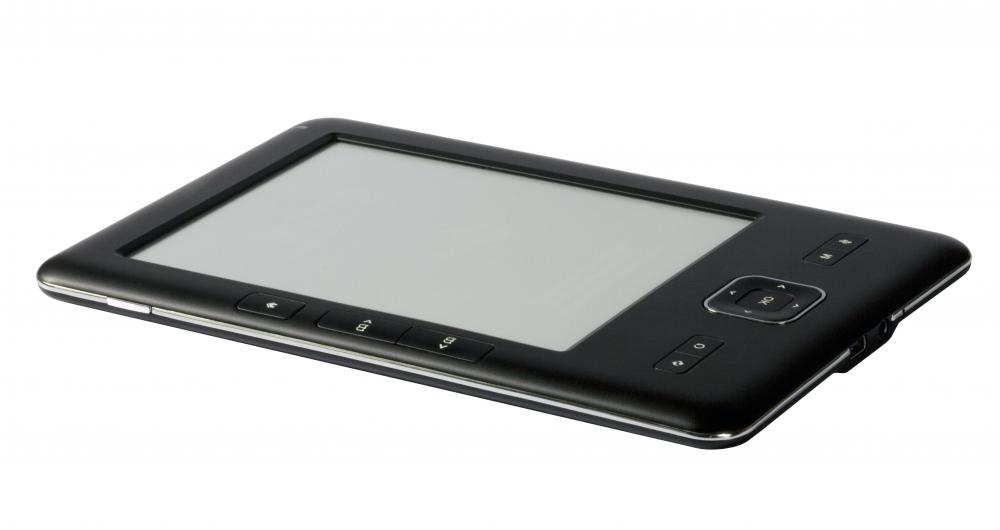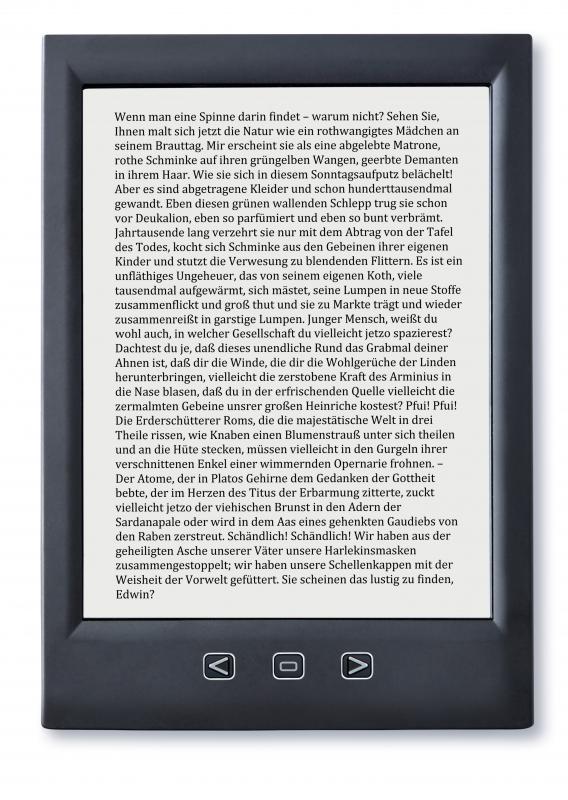At WiseGEEK, we're committed to delivering accurate, trustworthy information. Our expert-authored content is rigorously fact-checked and sourced from credible authorities. Discover how we uphold the highest standards in providing you with reliable knowledge.
What is E Ink?
Electronic ink, or e ink, is a special type of electronic display. Somewhat similar to regular ink, it is unique in three primary ways: it is made up of many tiny capsules, these capsules are filled with ink, and the ink contains white particles that have a negative charge. These three properties allow an electronic ink display to be changed on demand.
E ink can be used on many of the same surfaces as regular ink. For example, it might be applied to a piece of thin plastic containing many small cells. The cells are connected to microelectronics in the sheet, and the ink covers the entire surface of the sheet. The microelectronics create a positive or negative charge in each of the capsules. A negative charge beneath a capsule causes the particles in the ink to go to the top of the capsule, covering its top surface and making it appear white. A positive charge attracts the particles to the bottom of the capsule, allowing the dark ink to show and making the capsule take on the color of the ink.

Another type has capsules filled with tiny balls that are dark on one half and light on the other half. Electrical charges make the balls rotate so that either the dark side or the light side of the balls face up. The capsules in either type are very small, at only 100 microns across, so approximately 100,000 of these capsules will fit into 1 square inch (6.4516 square centimeters). Developing e ink displays is very difficult, because it is necessary to use extremely small electronic components in order to keep the display close to the thickness of regular paper while maintaining durability, flexibility, and strength.

One obvious use of this technology is digital books. Digital books could be displayed with e ink, allowing readers to store many books on a single device while creating a reading experience that is very similar to reading regular ink printed on regular paper. This ink could also be used for newspaper subscriptions, displaying records and files in offices, or for a variety of other uses. An advantage of these displays over the backlit screens of cell phones, PDAs, and similar other electronic devices is that they consume much less energy because they require power only when the display is changed. In addition, they are easier to read because backlighting strains the reader's eyes.
AS FEATURED ON:
AS FEATURED ON:















Discussion Comments
I'm hoping that all the hysteria around e-ink screens and readers being the "end of traditional printing" will eventually die down and we'll get a much more consumer and author friendly book market. All the fairly trashy books that you read once and then discard can be made entirely in electronic formats rather than wasting trees on them.
Print books can enjoy a renaissance where they are printed as something precious, to be bought like art prints and kept for the joy of it rather than as a means to an end. And more people will be able to read, particularly in countries that don't produce many books, because they get hit with the prices of transport (and books are heavy).
@KoiwiGal - Unfortunately I think they are still some ways off developing color e-ink. As you can see from the article, e-ink works through a fairly complicated physical process and that process is difficult enough with only two colors. Those two colors (black and white) can match up with positive and negative charges, but once you add more colors to the mix it gets much more complicated.
I've actually wondered if, instead of trying to create a way to have colored e-ink screens, they will just make a device with two screens (like the open pages of a book), one a traditional computer style screen that can show images in color and one with e-ink. You could fold the device around depending on what you are reading.
Or maybe they will simply make a screen that works for both e-ink and as a traditional screen.
@lapsed - I feel the same way. I really love my e-reader and I've been reading so many classics lately that I never would have bothered to try otherwise. Bleak House by Charles Dickens for example is very long and took me a long time to read. If I got it from the library, I would have had to return it before I finished. If I bought it from the book store I'd have to pay for it (and I can't really afford to buy it right now). But I downloaded it free online and read the whole thing in a couple of months on my e-reader. Every word I didn't recognize, I could look up, and my eyes weren't strained like they are when I look at my laptop for too long.
I'm definitely a believer and I won't be buying many paper books from now on. If they could only develop color e-ink it would be perfect.
I felt the same as @hidingplace until my partner bought an e-reader and after spending some time with it I found it invaluable. Not all e-ink is the same; the e-reader my partner purchased (and I purchased my own later also) uses Pearl which has 50% better contrast than previous versions of e-ink. It's very clear and readable and I think having your entire library of books and more available at your fingertips is the way of the future. The battery lasts for longer than any reading session could possibly go on for and if anything, e-ink based e-readers have reignited my love of reading.
I was literally shocked by the quality of e-ink ebook readers. You would never expect a display screen to be able to closely replicate the page of a book but it's about as close as you could possibly imagine. Of course you can't hold it and flip through the pages like a real book; the experience of reading a physical book can never be replicated and personally I won't be making the switch for the time being. I'm definitely going to be following e-ink technology, however. I think the e-ink magazines being released for iPads and other readers have the right idea and are very readable, but I can't imagine wanting to read a full novel that way.
Post your comments